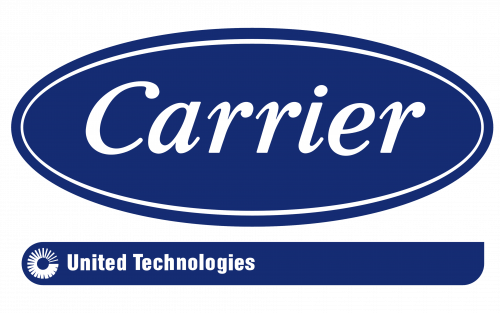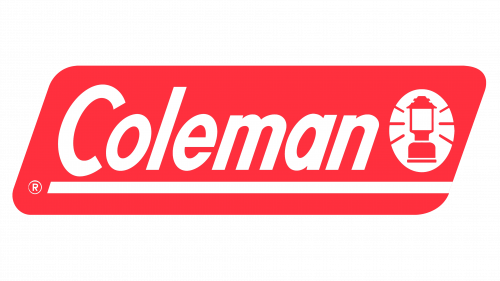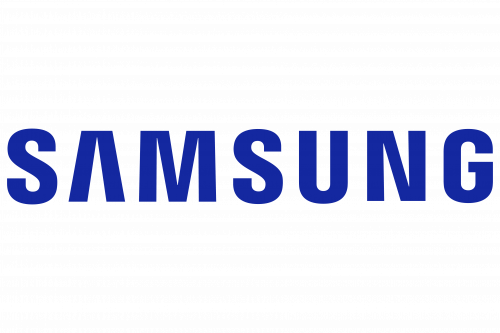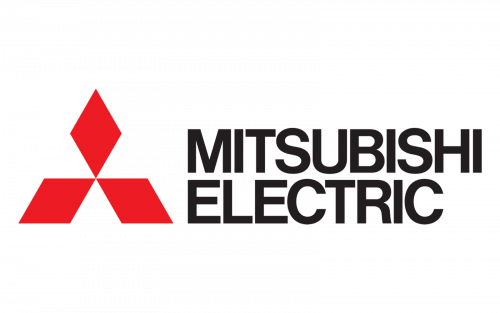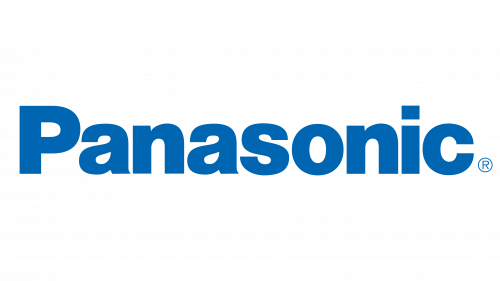As our globe grapples with the unpredictability of climate patterns, air conditioners transition from being mere comfort additions to essential components of our living spaces. With soaring temperatures in many regions, these cooling devices are not just about luxury but necessity. However, with a vast expanse of brands, each promising superior performance and advanced features, the challenge often lies in pinpointing the perfect fit for one’s needs.
Every brand in the cooling landscape brings its own strengths to the table – be it in terms of energy conservation, sleek aesthetics, reduced sound output, or cutting-edge smart functions. The contemporary consumer, aware and eco-conscious, looks beyond just cooling; they seek sustainable solutions, technological finesse, and lasting durability. This has led brands to constantly innovate and elevate their offerings.
This piece endeavors to guide you through the most commendable air conditioner brands this year. After extensive evaluation and analysis, we’ve shortlisted the champions in the cooling domain. Whether your priority is budget, technological prowess, or energy efficiency, our curated list will navigate you to the best options. Dive in, and let’s explore the brands that have masterfully balanced innovation with excellence.
Lennox
| Pros | Cons |
|---|---|
|
|
Originating in 1895, Lennox rose from humble beginnings to establish itself as an HVAC trailblazer. A key distinction of Lennox systems is their intricate craftsmanship, blending aesthetic appeal with unparalleled functionality. Their Quantum™ Coil technology, employing an anti-corrosive aluminum alloy, stands testament to their dedication to longevity. Pair this with the iComfort® S30 Ultra Smart Thermostat, and you have an AI-driven comfort solution that anticipates and adjusts to your personal preferences.
Lennox’s commitment to eco-friendly solutions shines through with the SunSource® Home Energy System. Beyond mere cooling, this system reimagines air conditioners as solar energy hubs, decreasing dependency on traditional power sources. By championing such innovations, Lennox has carved its niche as a forward-thinking, sustainable choice.
Carrier
| Pros | Cons |
|---|---|
|
|
With its genesis tied to Willis Carrier—the father of modern air conditioning—in 1915, Carrier has long been an epitome of innovation. Recognizing the burgeoning need for energy efficiency, the brand’s Infinity® Series showcases an adept variable-speed compression mechanism, fine-tuning energy consumption to the minutest degree. This is complemented by Greenspeed® intelligence, which elevates adaptability by merging adaptive speeds with pioneering variable-speed technology.
Carrier doesn’t just offer cooling solutions; it promises an integrated experience. With the Infinity® Control system, homeowners can delve into a more hands-on approach, curating their indoor climates to perfection.
York
| Pros | Cons |
|---|---|
|
|
York, a stalwart in the HVAC domain since 1874, prides itself on its legacy of cutting-edge solutions. Acclaimed for their low operational noise, York units integrate the sophisticated QuietDrive™ technology, promising serene indoor environments. Their pioneering spirit is further exemplified by the Climate Set™ technology, a unique offering allowing homeowners to curate their ideal atmospheric settings.
York’s dedication to efficiency isn’t limited to just powerful cooling. Their staunch support for the ENERGY STAR® initiative reinforces their commitment to a greener planet, marrying performance with sustainability.
Trane
| Pros | Cons |
|---|---|
|
|
Trane’s reputation resonates with resilience. The brand ethos, encapsulated in “It’s Hard to Stop a Trane,” is a nod to its robust design principles. Key to Trane’s reliability is the Climatuff® compressor, a product of countless hours of rigorous testing, ensuring it withstands the test of time. Coupled with the TruComfort™ technology, it epitomizes the ideal blend of durability and precision.
But Trane’s innovations don’t stop at cooling. The Trane CleanEffects™ Air Cleaner is a testament to their holistic approach to indoor comfort, offering pristine air quality that’s free from pollutants and allergens.
American Standard
| Pros | Cons |
|---|---|
|
|
Sharing roots with Trane, American Standard is no less distinguished in its own right. Their air conditioners, marked by a robust build, are crafted to endure the harshest of conditions. The AccuComfort™ Variable Speed Platinum series is a paradigm of modern cooling tech, achieving unparalleled energy efficiency while ensuring consistent comfort levels.
American Standard doesn’t just design products; they design experiences. Their utilization of environmentally-friendly refrigerants and the AccuLink™ communication system signifies their dedication to a harmonious balance between technological prowess and environmental stewardship.
LG
| Pros | Cons |
|---|---|
|
|
At the forefront of cutting-edge technology, LG has been instrumental in reshaping the way we perceive air conditioning. Beyond cooling, LG introduces a holistic home experience. Their ‘Active Energy Control’ is a prime example of this, allowing users to adjust energy levels to improve cooling efficiency. Paired with the ‘Monsoon Comfort’ technology, LG units intelligently sense the ambient humidity and control cooling accordingly, providing unparalleled comfort during rainy seasons.
Furthermore, LG’s Gold Fin™ anti-corrosion coating on the condenser extends the life of the unit, assuring users that they’re not just purchasing an air conditioner but a long-term cooling companion.
Ruud
| Pros | Cons |
|---|---|
|
|
Ruud, synonymous with robustness, crafts units that stand the test of time. Their ‘360+1’ design philosophy ensures every product undergoes rigorous testing plus one additional quality check. A distinguishing feature is their ‘PlusOne™ Diagnostic’ – an industry-first LED diagnostic panel offering speedy troubleshooting.
Additionally, Ruud’s ‘HumiDry’ technology plays a unique dual role. While most air conditioners only cool, Ruud’s units ensure that, during high humidity days, the air remains comfortably dry, enhancing the overall indoor experience.
Amana
| Pros | Cons |
|---|---|
|
|
Rooted in rich American heritage, Amana brings together old-world craftsmanship with modern innovation. Their ‘SureStart’ function ensures that the unit always starts at 170% of the rated capacity, giving that extra burst of cooling when you need it most.
Unique to Amana is their ‘Quiet Comfort’ technology. While most brands tackle noise, Amana takes a step further. Their units operate with a soft hum, ensuring that the tranquility of your space remains undisturbed, making every moment indoors a serene experience.
Goodman
| Pros | Cons |
|---|---|
|
|
Goodman, the embodiment of affordability meeting quality, prides itself on delivering more than just air conditioning. Their ‘AlumaFin7’ technology uses corrosion-resistant aluminum coils, ensuring that the unit’s efficiency remains uncompromised over the years.
Distinctly Goodman, their ‘SmartFrame’ substructure adds a robust design to the unit. It not only increases lateral stability but also provides a robust mounting area for internal components. It’s Goodman’s testament to blending form with function.
Rheem
| Pros | Cons |
|---|---|
|
|
Rheem, a name that resonates with innovation, has constantly set industry standards. Their ‘PlusOne™ Air Management System’ enhances the unit’s performance, ensuring a consistent airflow, which translates to a consistently comfortable indoor environment.
Another feather in Rheem’s cap is the ‘PlusOne™ Water Management System’. This feature prevents water spillage, ensuring that the unit and the surrounding area remain dry, safeguarding against potential water damage. It’s Rheem’s way of looking beyond just air conditioning, emphasizing the overall well-being of the user’s home environment.
Coleman
| Pros | Cons |
|---|---|
|
|
Originating as an outdoor gear manufacturer, Coleman has grown its HVAC segment over the years, carving a niche with robust and efficient air conditioning systems. Coleman units are often associated with their rugged build, mirroring their outdoor legacy. This ruggedness translates to units that can weather different environmental challenges. Furthermore, the Advanced Mainstream Engineering found in Coleman ACs ensures optimum airflow and temperature balance.
A significant highlight of Coleman’s units is the Charge View™ monitoring, which aids technicians in ensuring perfect refrigerant charge, essential for efficiency and longevity. Additionally, Coleman’s commitment to green technology is evident in their use of R-410A, a refrigerant known for being ozone-friendly. With a reputation built on reliability, Coleman continues to be a top choice for many homeowners seeking both durability and performance.
Frigidaire
| Pros | Cons |
|---|---|
|
|
Frigidaire’s name is etched in history, having been a significant player in the realm of home appliances for over a century. Their air conditioners mirror the brand’s overarching principle of delivering advanced technology with user-friendly interfaces. Frigidaire AC units often come with Effortless™ Temperature Control, ensuring the room remains at the set temperature irrespective of external conditions.
Another standout feature is their Effortless™ Restart, where the units automatically resume operations at their previous settings after a power outage. This ensures continuous comfort without manual intervention. Moreover, their units are designed with a SpaceWise® Adjustable Side Panels, adapting the unit to fit your window perfectly, ensuring efficient operation and preventing cool air leaks.
GE (General Electric)
| Pros | Cons |
|---|---|
|
|
When you talk about GE, you’re referring to a lineage of innovation and quality. Their air conditioners embody this legacy. One of the lesser-known but highly effective features in GE air conditioners is their corrosion-resistant coils, enhancing longevity, especially in humid regions. Also, with their Energy Saver Mode, GE ACs consume less electricity by efficiently managing fan operations.
A remarkable feature in selected GE units is the Electronic Digital Thermostat, which maintains precise temperature settings, ensuring both comfort and efficiency. Moreover, their Filter Reminder Light is a simple yet effective tool, alerting users when it’s time to change the filter, thus guaranteeing clean air and optimal unit performance.
Daikin
| Pros | Cons |
|---|---|
|
|
Daikin stands tall as a global leader, renowned for pushing boundaries in air conditioning technology. Their units, often found in both homes and commercial spaces, are a testament to their engineering excellence. One of Daikin’s signature features is their Flash Streamer technology, which, beyond just cooling, ensures the air is free of pollutants and allergens.
Furthermore, Daikin’s units come with the Econo Mode, a feature designed to limit the maximum power consumption. This not only saves on energy bills but also reduces the potential circuit load, especially when other electrical devices are in use. Another significant advancement is Daikin’s Indoor Unit Quiet Operation, where the sound levels are reduced by 3dB, ensuring a peaceful environment. Their commitment to a better, cooler world is evident in every unit they produce.
Samsung
| Pros | Cons |
|---|---|
|
|
Samsung is not just an electronics brand; it’s an innovation powerhouse. With its Wind-Free™ technology, Samsung ensures cooling without the constant rush of cold drafts, using thousands of micro-holes to disperse air uniformly. Additionally, Samsung’s Bixby integration allows voice-controlled operations, letting users set temperatures or switch modes without lifting a finger.
In the realm of sustainability, Samsung makes a mark with its eco-friendly R32 refrigerant. But beyond that, their Triple Inverter Technology is also worth mentioning. This technology harnesses the power of the Digital Inverter Boost to maintain the desired temperature with minimal fluctuation, ensuring prolonged compressor life, reduced noise, and increased energy savings.
Mitsubishi Electric
| Pros | Cons |
|---|---|
|
|
When one thinks of precision cooling and heating, Mitsubishi Electric often comes to mind. Their unique Zoned Comfort Solutions provide tailored temperature experiences for different parts of the home. The i-See Sensor™ isn’t their only ace; Mitsubishi Electric’s air conditioners also boast the H2i technology, allowing them to provide high heat even during extremely cold conditions, making them an excellent choice for colder climates.
One of the defining aspects of Mitsubishi Electric air conditioners is their whisper-quiet operation. Their advanced fan technology ensures optimal airflow with minimal noise, making it a pleasant companion for peaceful nights. Additionally, their filtration system doesn’t just stop at the Plasma Quad Plus. They also incorporate Blue Fin technology, ensuring longer lifespan by preventing the corrosive buildup on the unit’s evaporator.
Panasonic
| Pros | Cons |
|---|---|
|
|
With over a century of experience, Panasonic fuses traditional values with futuristic technology. The nanoe™ technology is a game-changer, but Panasonic also incorporates the AEROWINGS feature. This dual flap design ensures focused, fast cooling by directing cooler air to the room’s center. Over time, these flaps adjust to provide wide and uniform cooling.
Furthermore, Panasonic’s ECONAVI sensors are a testament to the brand’s commitment to energy conservation. With intelligent detections, these sensors not only adjust the cooling but also sync with the Sleep Mode. This mode optimizes temperature during nighttime, ensuring undisturbed sleep and further conserving energy. The Sky Series also deserves mention with its radiant cooling and dedicated SKYWING flap, promising a new horizon in comfort.
Selecting the Ideal Air Conditioning Brand Suited to Your Needs
When diving into the sea of air conditioning brands and models, it’s crucial to take into account certain pivotal factors tailored to your unique requirements.
Budgetary Considerations
Investing in an air conditioning unit is often a significant financial undertaking. Multiple elements can influence the overall expenditure. It’s beneficial to engage with an adept installation expert or a brand ambassador who can provide a comprehensive breakdown of these variables and offer a pertinent estimate specific to your locality.
Considerations such as the size of your home, the desired cooling capacity, areas of the house you wish to cool, insulation caliber, and the presence of an existing AC infrastructure play a part in determining costs. On the unit-specific side, parameters like energy efficiency, additional functionalities, and the required BTUs can significantly alter the final sum.
Your geographical location and its associated maintenance demands can also sway initial and recurring expenses. Residences in warmer areas might need sturdier units that necessitate regular upkeep, while homes in cooler zones might anticipate more economical solutions since their AC usage could be seasonal or infrequent.
It’s wise to factor in the longer-term implications of an AC’s energy consumption on your utility bills. While energy-efficient models may appear to be heftier investments upfront, they often justify their cost by generating savings in subsequent years.
Enhanced Functionalities
A feature-rich air conditioning unit will invariably carry a heftier price tag. Premium models tend to offer a multitude of additional functionalities. Hence, it’s imperative to diligently assess product specifications to ensure you are not overburdening your purchase with features you might not need. For instance, while an energy-conserving AC is desirable, coupling it with sophisticated internet and mobile app functionalities might be superfluous for some.
It’s always beneficial to prioritize durable warranties, commendable customer support, and cost-effective energy-conservation features. Even basic AC versions frequently present commendable features in these domains. Hence, evaluate a broad spectrum of options, both extravagant and simple, before making an informed decision.
Guarantees and Warranties
For substantial investments like air conditioning systems, warranties serve as crucial safety nets. Endeavor to identify warranty packages that align with your needs, considering variables like your usage frequency and geographical location. While warranties covering installation errors are invaluable, those that address manufacturing anomalies further enhance the protection level.
It’s worth noting that budget-friendly models might sometimes be accompanied by less comprehensive warranties. Although an upscale system might strain your wallet initially, its comprehensive coverage might shield you from exorbitant repair expenses in the future.
Customer Support Excellence
Exceptional customer service is pivotal across all business sectors, but in domains like HVAC where the product significantly influences one’s comfort and well-being, it’s non-negotiable. As you explore brands, take the time to peruse reviews, solicit quotes from multiple vendors, and even engage directly with potential providers to gauge their customer service ethos. This approach is also prudent when engaging with installation experts, especially those who aren’t affiliated with the manufacturing entity.
Should you encounter any red flags, such as ambiguous warranty procedures or less-than-knowledgeable technicians, trust your instincts and continue your quest elsewhere. A brand’s commitment to timely and effective customer support can be instrumental in ensuring your long-term satisfaction.
Conclusion
In conclusion, selecting the right air conditioner brand requires careful consideration of various factors tailored to individual needs. Whether you’re in the market for window air conditioners, portable air conditioners, or a comprehensive central air conditioning system, understanding the nuances of each type can greatly influence your decision. Brands that offer a range of products, including heaters and split systems, provide flexibility for different living spaces and climates.
For those with specific architectural features, such as high ceilings or unique ductwork, finding a solution that accommodates square footage without compromising efficiency is key. The Midea U has emerged as a notable option, especially for its innovative design that blends seamlessly with window setups, ensuring that room size and square feet are adequately cooled with minimal moisture retention.
Moreover, the importance of energy efficiency cannot be overstated. Opting for an HVAC system with a timer function can lead to significant savings on electrical bills, making certification such as Energy Star a valuable marker of a unit’s potential economic and environmental impact. Portable AC units and room AC models offer additional flexibility, catering to the varied demands of portable air conditioning without sacrificing performance.
In essence, the best air conditioner brand for you will depend on your specific needs—ranging from the size of the space you need to cool, the unique characteristics of your home, to your energy efficiency desires. By carefully considering these aspects, you can ensure comfort, efficiency, and satisfaction with your air conditioning choice, keeping your space cool while controlling moisture and keeping energy costs in check.
Top Air Conditioner Brands
- Lennox
- Carrier
- York
- Trane
- American Standard
- LG
- Ruud
- Amana
- Goodman
- Rheem
- Coleman
- Frigidaire
- GE
- Daikin
- Samsung
- Mitsubishi Electric
- Panasonic
What are the best central air conditioner brands?
Some of the top central air conditioner brands include Trane, Carrier, and Lennox. Each of these brands offers a combination of efficiency, reliability, and performance.
What are the best air conditioner brands?
Among the leading air conditioner brands are Daikin, Mitsubishi, and LG. These brands are renowned for their quality, durability, and innovative features.
What are the 10 best air conditioner brands?
The 10 best air conditioner brands, based on user reviews and industry reputation, might include Daikin, Mitsubishi, LG, Trane, Carrier, Lennox, York, Rheem, Goodman, and American Standard. These brands cater to a variety of needs and budgets.




